Oh that made me laugh Stephen!"But it's a bargain dear not even the price of a replacement gearbox for a Seat!"
You are using an out of date browser. It may not display this or other websites correctly.
You should upgrade or use an alternative browser.
You should upgrade or use an alternative browser.
What's made you smile today?
- Thread starter angel
- Start date
Currently reading:
What's made you smile today?
Finished off the underbody waxing today after some more wax turned up so now it looks more even & even did both rear arches at the same time as I was on a roll  thank heavens that mucky job is now done, just the front arches to do at any point as they have full arch liners so should hopefully be quite clean underneath
thank heavens that mucky job is now done, just the front arches to do at any point as they have full arch liners so should hopefully be quite clean underneath
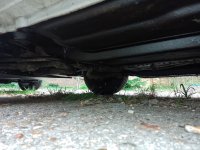
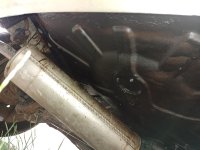
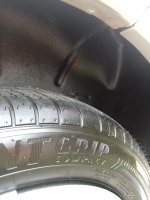
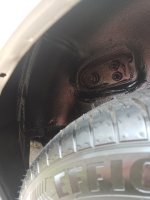
the arches liners didn't want to budge though as the screws were proper seized so I got the long lance behind them that Bilt Hamber provide with the S50 after cleaning it all out, the amount of dirt that came out from behind the liners was unreal. Also got the wipers sitting in the correct position as they were hitting the bottom of the rubber seal where they were positioned a little too low

& then had a good clear out of the car cleaning bin which lives in the garden where I found a bit of tyre shine that was nearly empty so I couldn't resist had enough to do all 4 tyres & also installed new headlamp dust covers as the originals were both hanging on for dear life
had enough to do all 4 tyres & also installed new headlamp dust covers as the originals were both hanging on for dear life 
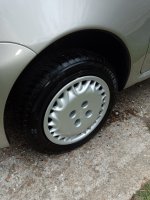




the arches liners didn't want to budge though as the screws were proper seized so I got the long lance behind them that Bilt Hamber provide with the S50 after cleaning it all out, the amount of dirt that came out from behind the liners was unreal. Also got the wipers sitting in the correct position as they were hitting the bottom of the rubber seal where they were positioned a little too low

& then had a good clear out of the car cleaning bin which lives in the garden where I found a bit of tyre shine that was nearly empty so I couldn't resist

The Panda Nut
Nutty about Pandas Infected by Panda virus and OPD
They have had more than 1. A 1973 DAF 66 Sold for £3200.Great. What did it fetch?
Last edited:
I prefer the older models "Daffodil", 33, 44, and 55. The 46 and 66 - and later Volvo badged cars - made their engines behave more like typical modern CVT transmissions ie, too "revy". Once you got into the way of throttle control the earlier ones could be driven really very quietly. It's the two cylinder cars, so 33 and 44 (and a Daffodil if I could find one) that I find most interesting.They have had more than 1. A 1973 DAF 66 Sold for £3200.
Though I have worked on many of the older 33s and 44s etc. In the 1970s we fitted lots of the drive belts and new centrifugal clutch shoes.I prefer the older models "Daffodil", 33, 44, and 55. The 46 and 66 - and later Volvo badged cars - made their engines behave more like typical modern CVT transmissions ie, too "revy". Once you got into the way of throttle control the earlier ones could be driven really very quietly. It's the two cylinder cars, so 33 and 44 (and a Daffodil if I could find one) that I find most interesting.
Later I had a customer with a really clean 2litre 340 GLT with conventional auto box.
Us too. Drive belts, particularly on the more powerfull 55, didn't last anything like as long as they should. Don't know if you knew? but genuine Daf belt kits were matched for size. That is to say a genuine kit had two belts of the exact same length. This was quite an important thing because below about 5mph or so the pulleys would be in their lowest ratio position. So the axle pulley halves would be fully together and the primary unit pulley halves pretty much fully apart. In this position, if the belts were not exactly the same length the car would pull to one side or the other until the speed increased enough to allow the pulleys to start altering. I used to collect "good" used belts which I then "recycled" on my 33 van. they never matched so my poor wee 33 always pulled one way or the other when coming to a dead stop or just when starting to move. It was a good thing the rear brakes were exempt from roller brake testing as I don't know what an MOT tester might have made of it?Though I have worked on many of the older 33s and 44s etc. In the 1970s we fitted lots of the drive belts and new centrifugal clutch shoes.
Later I had a customer with a really clean 2litre 340 GLT with conventional auto box.
The earlier shoe type centrifugal clutches were a constant source of "driver awareness instruction" for me. From the workshop point of view the 2 cylinder engines were a peach to do as I'm sure you'll remember. There was no radiator (air cooled) so just a front panel to remove and a few bits and bobs then we had a wheeled platform which just slid in under the engine and you pulled it forward off the propshaft (Just a "plug in" spline) and wheeled the engine out. The primary unit (effectively the gearbox) was in the back so wasn't involved. Later vehicles, the 46 and 66 had plate type centrifugal clutches (well the 66 did, not quite so sure about the 46?) which could be worn out just as quickly and cost a lot more. The secret was to keep the foot off the throttle when stationary and accelerate quite briskly when moving off so the plate didn't slip for too long. A technique which owners of modern direct shift gearboxes with "dry" clutch packs would be well advised to take heed off. The cost of replacing one of those "dual clutch" babies would let you buy several nearly new Daf 33s?
When Volvo took over, the big Volvo dealer down the road from us took all our customers away by offering crazy discounts. I suppose they could afford to do this as the wee cars were only a small part of their sales whereas we couldn't compete. A few very loyal customers stayed with us which was very touching but we just couldn't sell enough cars so the boss looked for another agency. The local Alfa garage had just shut it's doors and there were lots of rumours flying around that we were going to take it. As you might imagine, I got quite excited at the prospect. Unfortunately, in the event we became Polski Fiat dealers. I'd better not comment! Anyway, I was already in the pipeline for the instructor job so I moved soon after.
The local Daf Dealer was in Torquay Denis Kelly's as I recall.Us too. Drive belts, particularly on the more powerfull 55, didn't last anything like as long as they should. Don't know if you knew? but genuine Daf belt kits were matched for size. That is to say a genuine kit had two belts of the exact same length. This was quite an important thing because below about 5mph or so the pulleys would be in their lowest ratio position. So the axle pulley halves would be fully together and the primary unit pulley halves pretty much fully apart. In this position, if the belts were not exactly the same length the car would pull to one side or the other until the speed increased enough to allow the pulleys to start altering. I used to collect "good" used belts which I then "recycled" on my 33 van. they never matched so my poor wee 33 always pulled one way or the other when coming to a dead stop or just when starting to move. It was a good thing the rear brakes were exempt from roller brake testing as I don't know what an MOT tester might have made of it?
The earlier shoe type centrifugal clutches were a constant source of "driver awareness instruction" for me. From the workshop point of view the 2 cylinder engines were a peach to do as I'm sure you'll remember. There was no radiator (air cooled) so just a front panel to remove and a few bits and bobs then we had a wheeled platform which just slid in under the engine and you pulled it forward off the propshaft (Just a "plug in" spline) and wheeled the engine out. The primary unit (effectively the gearbox) was in the back so wasn't involved. Later vehicles, the 46 and 66 had plate type centrifugal clutches (well the 66 did, not quite so sure about the 46?) which could be worn out just as quickly and cost a lot more. The secret was to keep the foot off the throttle when stationary and accelerate quite briskly when moving off so the plate didn't slip for too long. A technique which owners of modern direct shift gearboxes with "dry" clutch packs would be well advised to take heed off. The cost of replacing one of those "dual clutch" babies would let you buy several nearly new Daf 33s?
When Volvo took over, the big Volvo dealer down the road from us took all our customers away by offering crazy discounts. I suppose they could afford to do this as the wee cars were only a small part of their sales whereas we couldn't compete. A few very loyal customers stayed with us which was very touching but we just couldn't sell enough cars so the boss looked for another agency. The local Alfa garage had just shut it's doors and there were lots of rumours flying around that we were going to take it. As you might imagine, I got quite excited at the prospect. Unfortunately, in the event we became Polski Fiat dealers. I'd better not comment! Anyway, I was already in the pipeline for the instructor job so I moved soon after.
When he closed down and retired I bought an anvil with all the blacksmith attachments for about £25 from him, then lifted it into my car on my own, certainly couldn't do that these days. Just for a laugh I put it on our bathroom scales which allegedly had a range up to 22 stone, it promptly broke them!!!
I proved a point yesterday, but in a good way. The guy in charge of events in our local MC chapter asked for help hauling the gear so he could actually ride his bike to the shindigs once in a while. I volunteered the Russian Mini-Tractor. He wasn't sure I could do it so we did a dry run last night to a Harley Davidson dealership Bike Night. Chris figured that it would take at least 30 minutes for me to load up. I did it in ten. That's Chris's restored 1976 Sportster next to the Ural.

The load set up at the Harley shop.


The load set up at the Harley shop.

The Harley I really liked was the XR 750 racing version.
I did see a similar one in the late 1970s I think, when they did a long track speedway Demo near me and when compared with the current Hagon Jap 500cc ones we used here for short track on shale it showed it's pedigree
I did see a similar one in the late 1970s I think, when they did a long track speedway Demo near me and when compared with the current Hagon Jap 500cc ones we used here for short track on shale it showed it's pedigree
I'm not a big fan of HD as they try to sell a 'Lifestyle' and a number of fools buy into it. I worked with one. That said, I do like the XR 1200 and the V-Rod.The Harley I really liked was the XR 750 racing version.
I did see a similar one in the late 1970s I think, when they did a long track speedway Demo near me and when compared with the current Hagon Jap 500cc ones we used here for short track on shale it showed it's pedigree
It was the fact it was a stripped down all out racer I liked , not the big bulky things we see everywhere nowadays.I'm not a big fan of HD as they try to sell a 'Lifestyle' and a number of fools buy into it. I worked with one. That said, I do like the XR 1200 and the V-Rod.
They all seem too "civilised" today
Last edited:
I gave the 'lifestyle' coworker grief 10 ways from Sunday when he told me he and his buddy were trailering their bikes to Daytona for Bike Week.They lived in Atlanta which is less than a days ride away. They liked the look but not the work.
The key to long belt life was frequent adjustment. This is why they had a 3000 mile/3 month service schedule. Only job really was to adjust the belts, and a general check over. If adjusted every 3000 miles, the belts would last 70k miles, but if one adjustment was missed, you could take 2/3 off that life. For regular customers, we'd do the adjustment for free, as once over the pit it would only take 10 minutes. Pit was best for this, tweak the adjustment, roll the car back and forth to seat teh belts, recheck. Difficult to do on a 4-post hoist.... Drive belts, particularly on the more powerfull 55, didn't last anything like as long as they should.
When I had my own 66, I used to do this on axle stands, rotating both rear wheels together, while lying underneath.
The Panda Nut
Nutty about Pandas Infected by Panda virus and OPD
How do you like my new machine...I proved a point yesterday, but in a good way. The guy in charge of events in our local MC chapter asked for help hauling the gear so he could actually ride his bike to the shindigs once in a while. I volunteered the Russian Mini-Tractor. He wasn't sure I could do it so we did a dry run last night to a Harley Davidson dealership Bike Night. Chris figured that it would take at least 30 minutes for me to load up. I did it in ten. That's Chris's restored 1976 Sportster next to the Ural.

The load set up at the Harley shop.

The Panda Nut
Nutty about Pandas Infected by Panda virus and OPD
Just back home. Noop 1020 miles. FULLY loaded 4 and dog, loaded to tge roof. 46.6mpg. Home run Alnwick, Rothbury, Hexham, Carlisle, Manchester Norfolk. Trip made difficult by the Seats 1st breakdown in 23 years. Its 200 miles from decomissioning so disapointing. Gear linkage pushon ball joint let go. Bodged up and we limped it back to manchester.
Very cool.How do you like my new machine...View attachment 447883View attachment 447884
The Panda Nut
Nutty about Pandas Infected by Panda virus and OPD
Thought you would like it!. Its a 2021 model. Owned by a friendly german couple. i asked to take a pic. He said sit on, and Ill take your pic. They had done over 1500 miles in around a week. It did really look cool.Very cool.
That explains the sidecar on the right.Thought you would like it!. Its a 2021 model. Owned by a friendly german couple. i asked to take a pic. He said sit on, and Ill take your pic. They had done over 1500 miles in around a week. It did really look cool.
Yes , I was looking at that.That explains the sidecar on the right.
The only combination I had was when I was 16, the 1955 Matchless 600c G11 Super Clubman, a neighbour offered me for £10. The sidecar was on my left.
Once I sorted out the tracking/alignment it spent most of it's time on two wheels as any mad young man would
The Panda Nut
Nutty about Pandas Infected by Panda virus and OPD
I can really get how Chest is so enthusiastic about his beast. This machine was really solid and clearly would go anywhere at all you chose to take it. Motor sounded great too. Me on the footrest is a big test. It felt like granite.
Last edited:

